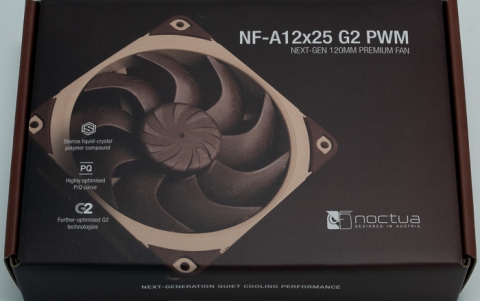
LCD TVs: 240 Hz Vs 120 Hz With Back Light Scanning
A recent study released by researchers at the University of San Diego, (UCSD), California, concludes that a 120Hz LCD TV with back light scanning cannot be referred as "true" 240Hz - a claim that could be a weapon in the hands of LCD makers Samsung and Sony against rival LG.
Most of the videos available in the market are 60 frames per second (fps). In order to display a 240Hz video stream, one has to increase the frame rate by 4 times, and display it using a 240Hz LCD. There are two major methods to increase frame rate. The first one is to use motion compensation.
In this method, a 60 fps is increased to 240 fps by inserting 3 additional frames between every two consecutive frames. This method is costly, but temporal resolution is increased by 4 times. Samsung and its Sony are currently the only two LCD-TV makers offering LCD TVs with a refresh rate of 240Hz. These LCD televisions are using two motion compensation-motion estimation (MCME) chips that help generate the interpolated frames used to enhance low frame rate video.
The second method is to first increase frame rate to 120 fps. Then each frame is divided into three horizontal bands and are displayed alternatingly. The top and bottom band from frame 1, the middle band from frame 1, top and bottom band in frame 2, middle band from frame 2, and so on are displayed sequentially. Clearly, the frame rate is doubled because one original frame is divided into two frames.
LG - which came up first with a 120Hz LCD TV model earlier this year - has chosen this second method to achieve a "240Hz" refresh rate. The company's 240Hz LCD TV models are reportedly using 120Hz panels coupled with flashing backlights placed behind the panel. The backlights flash on and off at a rapid rate to achieve a similar effect to a doubled refresh rate (240Hz).
The research of Stanley H. Chan and Truong Q. Nguyen "Comparisons of 240Hz LCDs," at UCSD is actually comparing these two methods of achieving a 240Hz refresh rate.
The researchers conclude that the second method (120Hz + Backlight scanning) is perceived blurrier. Although this technology provides a cheaper alternative for television makers, the researchers claim that pictures from true 240Hz televisions are definitely sharper.
"There are LCD TV operating at 120Hz with back light scanning. In this case, the period of the driving signal is still 1/240 second because the black light switching removes half of the 1/120-second period. However, A 120Hz LCD TV should have liquid crystals with only 120Hz response time (for otherwise one should have driven it using 240Hz signal!). Thus the exponential decay function should fall slower than a 240Hz liquid crystal. In this sense a 120Hz LCD with back light scanning cannot be referred as 240Hz as the response time of the liquid crystal is still 120Hz," the researchers conclude.
LG, along Vizio and Toshiba, have adopted this method using flashing backlights behind 120Hz panels to achieve similar effects to a doubled refresh rate.
LG has been heavily promoting its 240Hz LCD TVs since their introduction last March and claims that its scanning-backlight method has eliminated the reason to cause blur images on screens.
Generally, it's hard to realize the difference between a 120Hz picture and a 240Hz picture. However, there are differing opinions on whether the difference is worth paying the premium for. LG's "240Hz" approach allowed the company to offer 240Hz LCD -TV models at more attractive prices than the competitive offerings from Sony and Samsung.
In this method, a 60 fps is increased to 240 fps by inserting 3 additional frames between every two consecutive frames. This method is costly, but temporal resolution is increased by 4 times. Samsung and its Sony are currently the only two LCD-TV makers offering LCD TVs with a refresh rate of 240Hz. These LCD televisions are using two motion compensation-motion estimation (MCME) chips that help generate the interpolated frames used to enhance low frame rate video.
The second method is to first increase frame rate to 120 fps. Then each frame is divided into three horizontal bands and are displayed alternatingly. The top and bottom band from frame 1, the middle band from frame 1, top and bottom band in frame 2, middle band from frame 2, and so on are displayed sequentially. Clearly, the frame rate is doubled because one original frame is divided into two frames.
LG - which came up first with a 120Hz LCD TV model earlier this year - has chosen this second method to achieve a "240Hz" refresh rate. The company's 240Hz LCD TV models are reportedly using 120Hz panels coupled with flashing backlights placed behind the panel. The backlights flash on and off at a rapid rate to achieve a similar effect to a doubled refresh rate (240Hz).
The research of Stanley H. Chan and Truong Q. Nguyen "Comparisons of 240Hz LCDs," at UCSD is actually comparing these two methods of achieving a 240Hz refresh rate.
The researchers conclude that the second method (120Hz + Backlight scanning) is perceived blurrier. Although this technology provides a cheaper alternative for television makers, the researchers claim that pictures from true 240Hz televisions are definitely sharper.
"There are LCD TV operating at 120Hz with back light scanning. In this case, the period of the driving signal is still 1/240 second because the black light switching removes half of the 1/120-second period. However, A 120Hz LCD TV should have liquid crystals with only 120Hz response time (for otherwise one should have driven it using 240Hz signal!). Thus the exponential decay function should fall slower than a 240Hz liquid crystal. In this sense a 120Hz LCD with back light scanning cannot be referred as 240Hz as the response time of the liquid crystal is still 120Hz," the researchers conclude.
LG, along Vizio and Toshiba, have adopted this method using flashing backlights behind 120Hz panels to achieve similar effects to a doubled refresh rate.
LG has been heavily promoting its 240Hz LCD TVs since their introduction last March and claims that its scanning-backlight method has eliminated the reason to cause blur images on screens.
Generally, it's hard to realize the difference between a 120Hz picture and a 240Hz picture. However, there are differing opinions on whether the difference is worth paying the premium for. LG's "240Hz" approach allowed the company to offer 240Hz LCD -TV models at more attractive prices than the competitive offerings from Sony and Samsung.



















